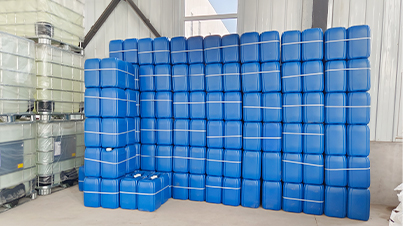Exploring the Benefits and Applications of Polyhydroxycarboxylic Acids in Modern Science
Polyhydroxycarboxylic Acids Nature’s Multifunctional Compounds
Polyhydroxycarboxylic acids (PHCAs) represent a fascinating class of organic molecules characterized by multiple hydroxyl (-OH) and carboxylic acid (-COOH) functional groups. These compounds occur naturally in various forms and play significant roles in both ecology and industry. In this article, we will explore the sources, properties, functions, and applications of polyhydroxycarboxylic acids.
Sources and Occurrence
PHCAs can be found in many natural sources, including plants, fungi, and bacteria. They are often involved in vital biochemical processes. For instance, citric acid, one of the most studied polyhydroxycarboxylic acids, is a key intermediate in the Krebs cycle, a crucial metabolic pathway for energy production in aerobic organisms. Other notable examples include tartaric acid found in grapes and malic acid abundant in apples.
Microbial production of PHCAs has garnered significant attention as well. Certain bacteria and fungi can synthesize these compounds, often as byproducts of their metabolic processes. Research has shown that using microbial fermentation can lead to the sustainable production of PHCAs, thus reducing reliance on petroleum-derived chemicals.
Structure and Properties
The structure of polyhydroxycarboxylic acids varies, yet they are typically classified based on the number of hydroxyl and carboxylic acid groups. These compounds can exist as linear or branched-chain molecules, affecting their physical and chemical properties. The presence of multiple hydroxyl groups imparts hydrophilicity, allowing these acids to form hydrogen bonds and interact with water molecules, enhancing their solubility.
Additionally, the carboxylic acid groups contribute to the acidity of PHCAs. The combination of these functional groups creates unique characteristics such as chelation, wherein these molecules can bind to metal ions. This property is particularly useful in various applications, including agriculture and pharmaceuticals.
Functions in Nature
polyhydroxycarboxylic acid

In nature, PHCAs play crucial roles in several ecological and physiological processes. For example, they can influence plant growth and development by modulating nutrient availability in the soil. The chelating ability of these acids helps mobilize essential minerals, making them more accessible to plants.
Moreover, PHCAs participate in microbial interactions, acting as signaling molecules or metabolic substrates. They can establish symbiotic relationships, particularly between plants and mycorrhizal fungi, facilitating nutrient exchange that benefits both parties.
Applications in Industry
The multifunctional character of polyhydroxycarboxylic acids makes them valuable in a variety of industries. In the food and beverage sector, citric acid is widely used as a natural preservative and flavoring agent due to its tart taste. Its ability to act as an acidulant helps to maintain the pH of various products, thereby extending shelf life and enhancing flavor profiles.
In pharmaceuticals, PHCAs are explored for their potential in drug delivery systems. Their ability to form complexes with drug molecules can improve drug solubility and bioavailability. Research is ongoing to develop innovative delivery mechanisms utilizing PHCAs to target specific tissues, thereby increasing the efficiency of therapeutic agents.
Furthermore, in the field of materials science, polyhydroxycarboxylic acids are being investigated for their role in biodegradable plastics. As environmental concerns regarding plastic waste intensify, PHCAs present a promising alternative due to their renewable nature and potential for sustainable production.
Conclusion
Polyhydroxycarboxylic acids are more than just simple organic compounds; they are vital players in nature and industry. Their diverse roles, from nutrient mobilization in ecosystems to applications in food preservation and pharmaceuticals, underscore their multifunctionality. As research continues to unveil new applications and syntheses of PHCAs, they are likely to play an increasingly important role in developing sustainable solutions for global challenges. The future holds promise for these intriguing compounds, offering a pathway to a more sustainable and eco-friendly world.
-
Water Treatment with Flocculant Water TreatmentNewsJun.12,2025
-
Polymaleic AnhydrideNewsJun.12,2025
-
Polyaspartic AcidNewsJun.12,2025
-
Enhance Industrial Processes with IsothiazolinonesNewsJun.12,2025
-
Enhance Industrial Processes with PBTCA SolutionsNewsJun.12,2025
-
Dodecyldimethylbenzylammonium Chloride SolutionsNewsJun.12,2025





